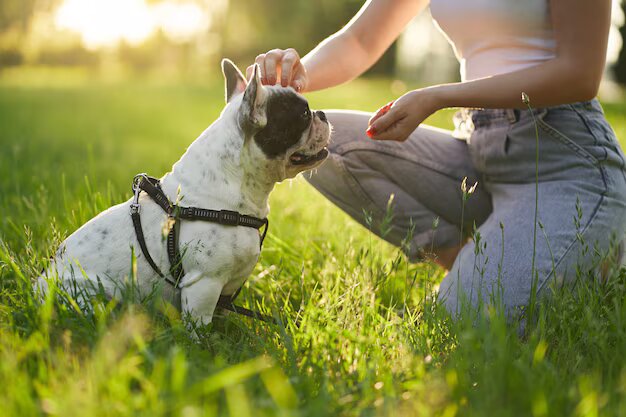Train Your Dog Before They Train You to Follow Their Lead!

Training a dog for obedience is a rewarding journey that strengthens the bond between owner and pet. Whether dealing with a new puppy or an adult dog with behavioral issues, the principles of effective dog training remain the same. This comprehensive guide explores the key steps to achieving a well-behaved dog, leveraging the best dog training techniques, and maximizing the training experience.
1. Understanding the Basics of Dog Training
Before diving into specific training techniques, it’s essential to grasp the fundamentals of dog training. The primary goal is to teach a dog commands and behaviors that will make them a well-mannered family member. Effective dog training focuses on:
- Consistency: Being consistent with commands and expectations helps a dog understand what is required.
- Positive Reinforcement: Rewarding good behavior with treats, praise, or toys encourages the dog to repeat the desired actions.
- Patience: Training takes time. Avoid frustration and keep sessions short and engaging to maintain the dog’s interest.
2. Setting Clear Goals
Define what obedience means for the dog. Are the goals to teach basic commands like sit, stay, and come, or are more advanced skills like off-leash obedience desired? Setting clear, achievable goals helps in creating a structured training plan and measuring progress effectively. Use Train Pet Dog Coupon Code for more savings.
3. Choosing the Right Training Method
Different methods work for different dogs, so it’s crucial to choose a training approach that suits the pet’s temperament and the owner’s lifestyle. Some popular methods include:
- Positive Reinforcement: Reward-based training encourages good behavior through positive rewards.
- Clicker Training: Uses a clicker to mark desirable behaviors, followed by a reward.
- Model-Rival Training: Uses another dog or person as a model to demonstrate the desired behavior.
- Off-Leash Canine Training: Focuses on teaching commands that work even when the dog is not on a leash. This method is particularly useful for advanced obedience and ensures that the dog responds reliably in various environments.
4. Creating a Training Schedule
Consistency is key in dog training. Establish a routine that includes:
- Short Training Sessions: Aim for 5-10 minute sessions several times a day to keep the dog engaged without overwhelming them.
- Daily Practice: Regular practice helps reinforce learning and improves retention.
- Varied Environments: Train in different settings to ensure the dog can respond to commands in various situations.
5. Teaching Basic Commands
Start with fundamental commands and gradually progress to more complex behaviors. Key commands include:
- Sit: A foundational command that helps with control and management.
- Stay: Teaches the dog to remain in place until released.
- Come: Ensures the dog returns on command, crucial for off-leash training.
- Heel: Encourages the dog to walk beside the owner, making walks more enjoyable and controlled.
Use positive reinforcement to reward the dog each time they correctly follow a command. This reinforcement could be treats, praise, or playtime.
6. Addressing Behavioral Issues
Identify and address specific behavioral issues such as:
- Excessive Barking: Use commands like “quiet” and reward calm behavior.
- Jumping Up: Teach the dog to greet people politely by sitting or staying down.
- Chewing: Redirect chewing to appropriate toys and use commands like “leave it.”
Handling behavioral problems early prevents them from becoming ingrained habits. Consistent training and positive reinforcement are effective strategies for resolving these issues.
7. Incorporating Advanced Training
Once the dog masters basic commands, introduce more advanced training:
- Off-Leash Training: Build on basic commands to ensure the dog listens even when off-leash. This requires a strong foundation in basic obedience and gradual practice in distraction-filled environments.
- Agility Training: Engage the dog in agility courses to improve coordination and obedience.
- Trick Training: Teach fun tricks like roll over, play dead, or fetch to keep training enjoyable and stimulating.
Advanced training enhances the dog’s skills and keeps them mentally and physically stimulated.
8. Utilizing Training Tools
Training tools can aid in the process but should be used appropriately:
- Collars and Leashes: Use standard collars and leashes for basic training and ensure they fit properly.
- Clickers: Useful for clicker training to mark desired behaviors.
- Training Mats and Crates: Help in creating structured training environments and managing behavior.
Explore various tools and methods, but always prioritize the dog’s comfort and safety.
9. Maintaining and Reinforcing Training
Consistency doesn’t end once the dog learns commands. Regularly reinforce training to ensure the dog retains their skills:
- Review Commands: Periodically practice commands to keep them fresh in the dog’s mind.
- Positive Reinforcement: Continue rewarding good behavior to maintain motivation.
- Adjust Training: As the dog matures or if their behavior changes, adapt the training approach accordingly.
10. Finding Professional Help
If encountering challenges or needing additional guidance, consider professional dog trainers. Look for trainers who use positive reinforcement techniques and have experience with the specific issues being faced.
FAQs
Is it possible to train a dog for obedience even if the dog is older?
Yes, it’s possible to train a dog of any age. While younger dogs may learn more quickly, older dogs can still be trained with patience and consistency.
How long typically does it take to train a dog for obedience?
The time it takes to train a dog for obedience varies depending on the dog’s breed, age, and personality. Some dogs may learn quickly, while others may take longer.
What are some common mistakes to avoid when training a dog?
Some common mistakes to avoid include using harsh punishment, being inconsistent with commands, and not providing enough positive reinforcement.
Can a dog be trained for obedience by oneself, or should a professional trainer be hired?
You can certainly train a dog for obedience yourself, but hiring a professional trainer can provide personalized guidance and support.
How to know if a dog is ready for off-leash training?
A dog should have a strong foundation in basic obedience commands, such as sit, stay, come, and heel. They should also be comfortable and well-socialized in different environments.
What are some additional resources for dog training?
In addition to Train Pet Dog, many other online resources and books are available to help train a dog. Consult with a veterinarian or a local animal shelter for recommendations.
Ongoing Offers
$30 Off Pet Dog Training Course
Unlock $30 in savings on our Pet Dog Training Course! Strengthen the bond with your furry companion through effective training techniques. This is a limited-time offer, so don’t miss out—enroll today!
FREE Bernese Mountain Dog Training Course
Embark on our FREE Bernese Mountain Dog Training Course! Explore the breed’s origins, personality traits, and effective training techniques for the lovable Berner. Enroll now to start your training journey!
FREE Bichon Yorkie Training Course
Join the FREE Bichon Yorkie Training Course! Discover the temperament, exercise needs, and health essentials of the charming Yo-Chon (Bichon Yorkie) companion. Start training today!
FREE Black and Tan Coonhound Training Course
Enroll in FREE Black and Tan Coonhound Training Course! Gain insights into personality, exercise needs, and health to ensure a happy, well-trained companion. Sign up now!
FREE Black Russian Terrier Training Course
Discover FREE Black Russian Terrier Training Course! Learn about temperament, exercise, grooming, and health essentials for a well-rounded understanding of this wonderful breed. Enroll today!
FREE Boerboel Training Course
Explore the FREE Boerboel Training Course! Delve into the origin, temperament, training, and exercise needs of the African Boerboel breed. Unleash a well-behaved and happy Boerboel today!
FREE Basset Hound Training Course
Transform your unruly Basset into a loving companion with our FREE Basset Hound Training Course! Receive step-by-step tips for puppy training, obedience, and behavior correction. Subscribe now!
FREE Beagle Training Course
Join FREE Beagle Training Course! Discover effective techniques for turning your unruly Beagle into a loving and friendly companion. Subscribe now for valuable insights!
FREE Border Terrier Training Course
Enroll in the FREE Border Terrier Training Course! Transform your unruly pet into a loving companion with expert tips on housebreaking, obedience, and behavior correction. Subscribe now!



